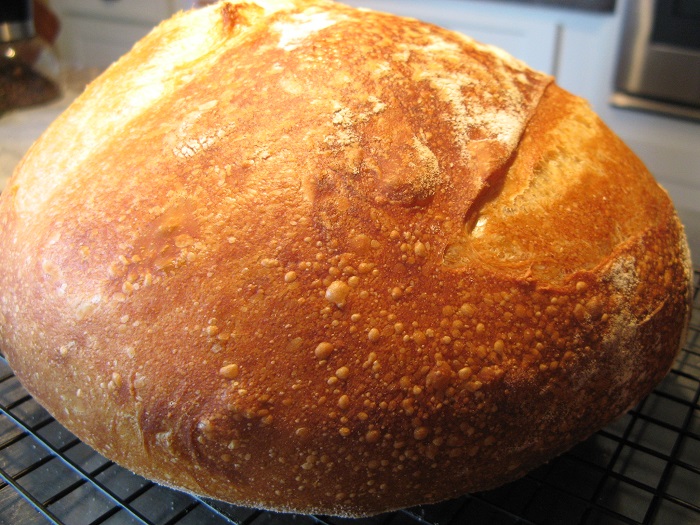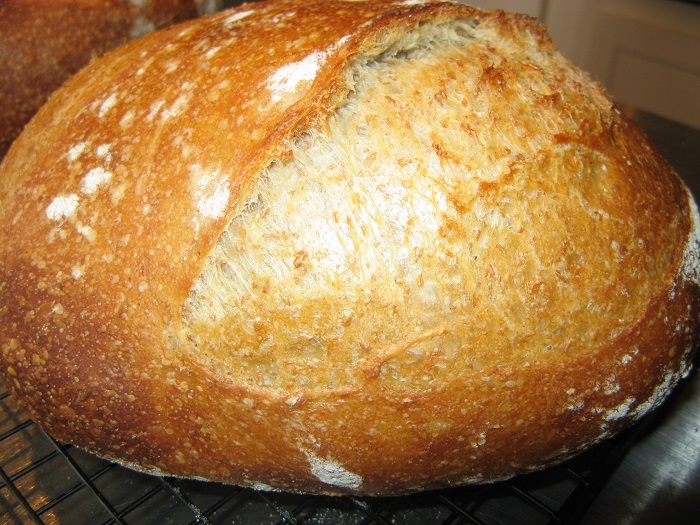
One of my favorite childhood breads: German "Dreikorn" (3 seed) Bread

This must be one of my absolute childhood favorites. It's a basic 50% whole wheat sourdough recipe, but it gets most of its flavor from the copious amounts of seeds: flax, sesame, and millet. It's an instant crowd pleaser and probably the bread that my kids ask for most frequently.
When I first started making my own breads, "Dreikorn" bread was high on the list of recipes that I wanted to reverse engineer. Turns out, it's actually one of the easier breads to make.
| 150g | Golden flax seeds |
| 250ml | water |
| ◇ | |
| 60g | sour dough culture |
| 200g | white whole wheat flour |
| 135ml | water |
| ◇ | |
| 250g | King Arthur flour |
| 180ml | water |
| 17g | salt |
| 3g | dry yeast |
| 100g | millet |
| 70g | roasted sesame seeds |
| 10g | sesame oil |
| ◇ | |
| 2 Tbsp | roasted sesame seeds |
Soak flax seeds in water until softened.
Combine mother starter culture, whole wheat and water, and let rest at room temperature for about eight hours or until doubled in volume
Combine all of the ingredients and knead thoroughly for 5 minutes.
Let rest at room temperature until approximately doubled in volume, about three hours. During this time, stretch-and-fold four times in about 15 minute increments.
Coat a dutch oven with margarine or butter and dust with semolina flour.
Form dough into a boule and transfer into dutch oven. Let rest at room temperature for another 30-60 minutes.
Preheat oven to 500°F (260°C).
Brush dough with water, and sprinkle with remaining sesame seeds.
Cover Dutch oven and bake at 500°F (260°C) for 25 minutes. Remove lid and continue baking at 375°F (190°C) for about another 35 minutes or until interior temperature reads 200°F (95°C).
Remove from oven, let cool for 10min then remove from Dutch oven. Let bread rest on a cooling rack for at least two hours.









































